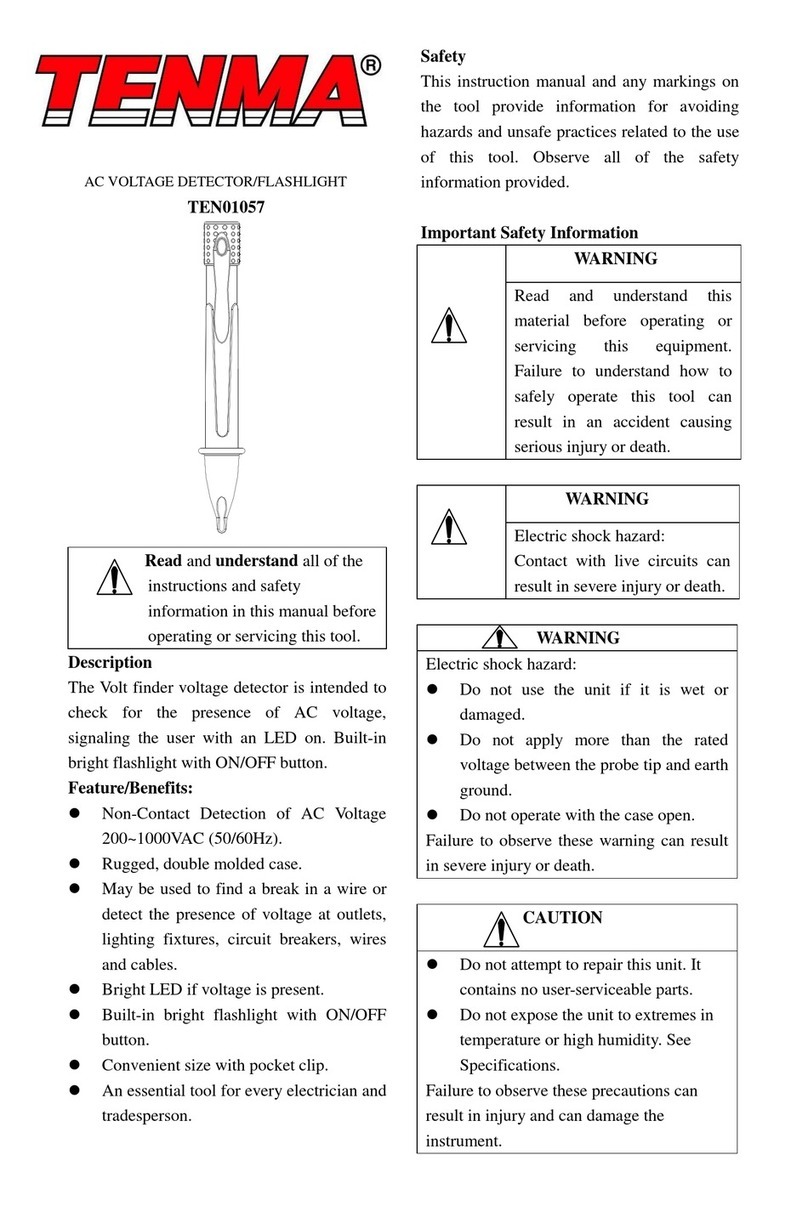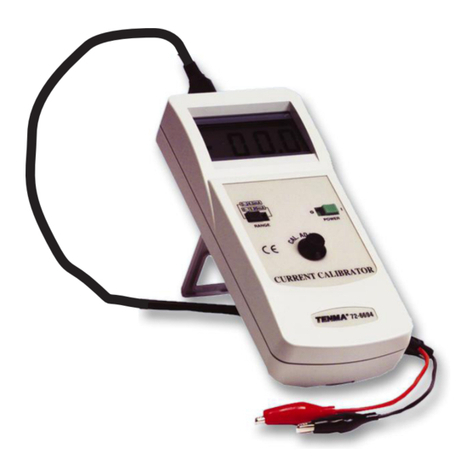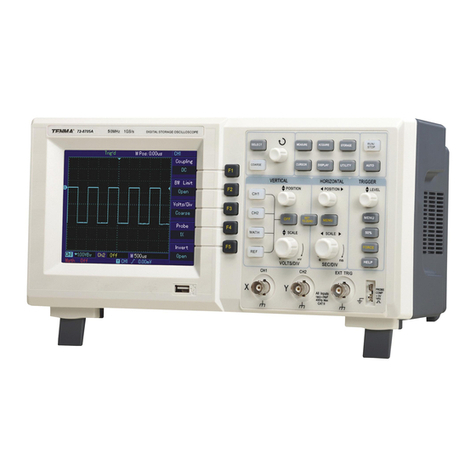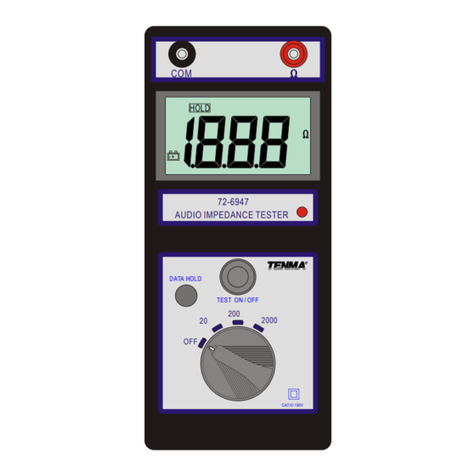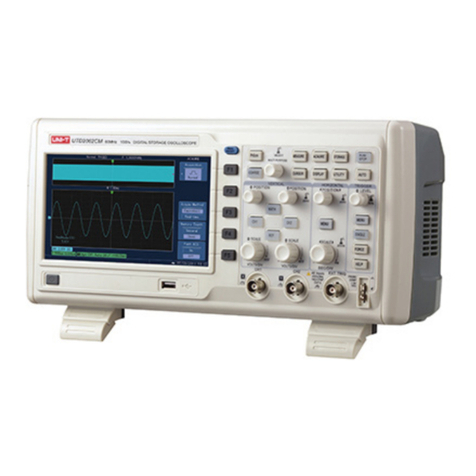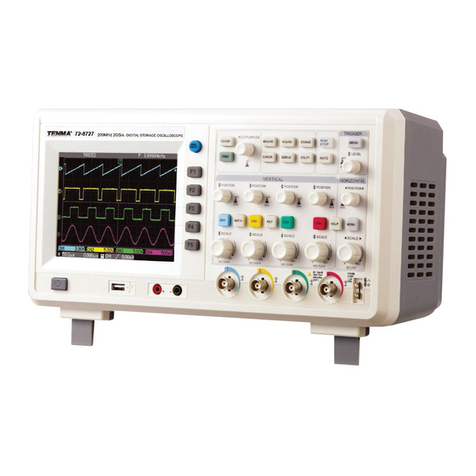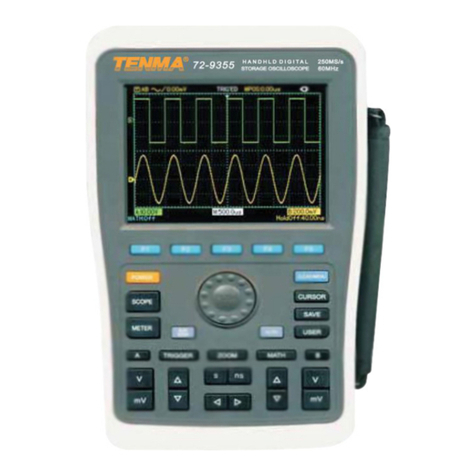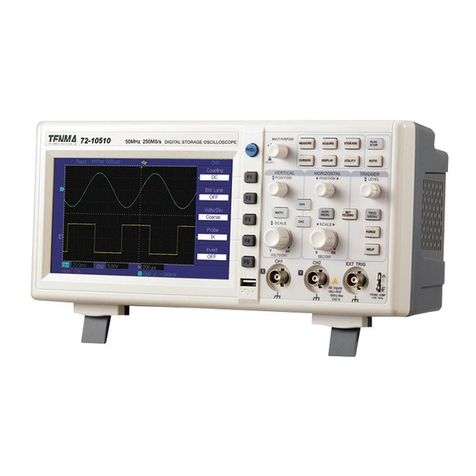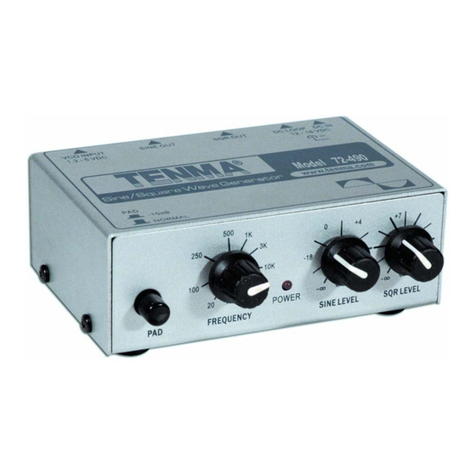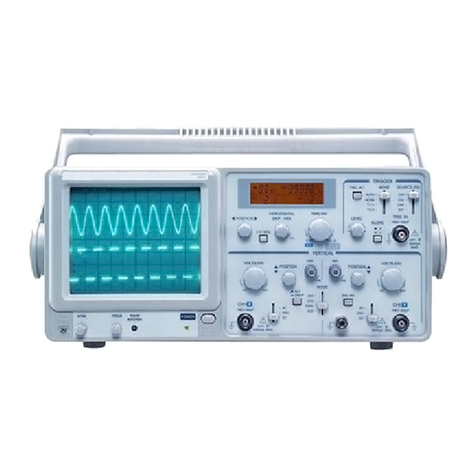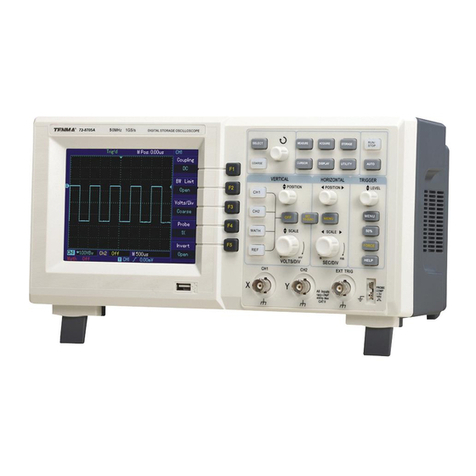
16
Trigger Source - Trigger can be obtained from various sources: Input channel (CH1,
CH2, CH3 or CH4), external trigger (EXT, EXT/5) or line.
1. Input channel - the most common trigger source is one of the four input channels.
The selected trigger source can operate normally whether the input waveform is
displayed or not.
2. External trigger - this type of trigger source can trigger in a third channel while
acquiring data in two other channels. Both EXT and EXT/5 trigger sources use
external trigger signals from the EXT TRIG jack. EXT can use the signals directly.
You can use EXT within the trigger level range of -0.8V and +0.8V. EXT/5 divides
the trigger by 5. As a result trigger range is extended to -4V to +4V enabling the
oscilloscope to trigger at a large signal.
3. Line - this trigger mode is suitable for observing signals related to the AC grid
power source eg: the correlation between lighting equipment and power source
equipment to achieve stable synchronisation.
Trigger Mode - determines the action of the oscilloscope when there is no trigger. There
are three trigger modes - auto, normal and single.
1. Auto Trigger - samples the waveform data when there is no trigger signal input.
The scan base is shown on the display. When the trigger signal is generated it
automatically turns to trigger scan for signal synchronisation.
Note: when the time base of the scan waveform is set to 50ms/div or slower, a roll
waveform is generated.
Normal Trigger - In this mode waveforms are only sampled when triggering conditions
are met. The system stops acquiring data and waits when there is no trigger signal.
When a trigger is generated, trigger scan occurs.
2. Single Trigger - In this mode press RUN button once and the oscilloscope will wait
for trigger. When one trigger is detected, it will sample and display the acquired
waveform, then stop.
Trigger coupling - determines which quantities of the signal are transmitted to the
trigger circuit. Coupling modes are DC, AC, low frequency reject and high frequency
reject.
1. DC - allowing all quantities to pass.
2. AC - intercepting DC quantities and attenuating signals under 10Hz.
3. Low Frequency Reject - Intercepting DC quantities and attenuating low frequency
quantities under 80kHz.
4. High Frequency Reject - Attenuating high frequency quantities over 80kHz.
Pre-Trigger/Delayed Trigger - data sampled before/after triggering. The trigger position
is typically set at the horizontal centre of the screen. You are able to view ve divisions
of pre-trigger and delayed trigger information. Use the POSITION control to adjust the
horizontal shift of the waveform to see more pre-trigger information. By observing pre-
trigger data you can see the waveform before trigger occurs. You can detect the glitch
that occurs when the circuitry starts. Observing this data can help identify the cause of
this glitch.
OPERATION
Setting up the Sampling System
• The ACQUIRE button on the
control panel is the function key
for the sampling system.




















